Manifestations of Modernisms – Some thoughts on the histories of exhibitions in the Ugandan context
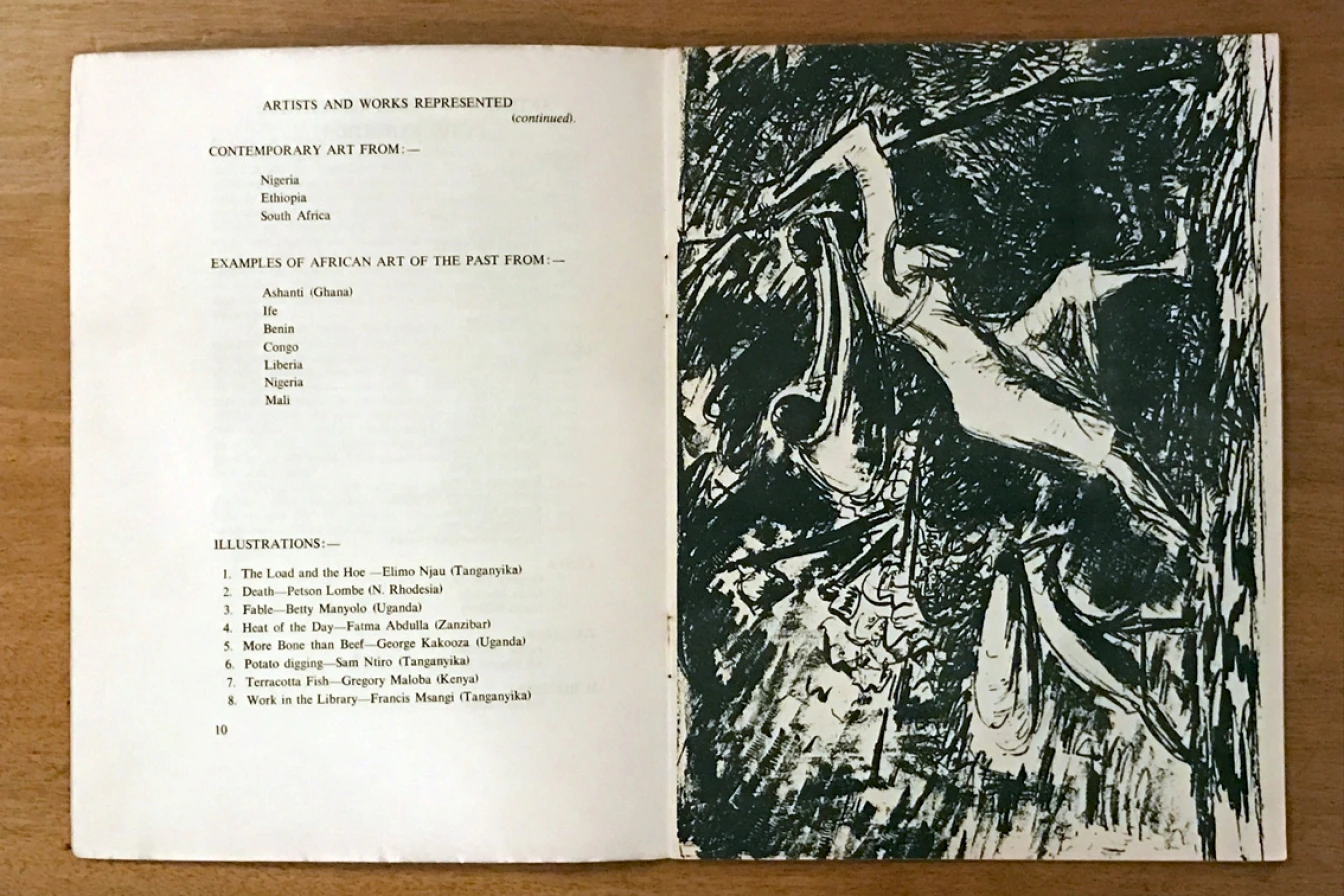
Africa & Art. An Exhibition of Art in Africa Celebrating the Independence of Tanganyika. Printed at Makerere College Library and Uganda Printing & Publishing Co. Ltd. 1961, p.10-11.
The international collaborative research project African Art History and the Formation of a Modern Aesthetic examines concepts and manifestations of African modernisms in different private and institutional art collections. The scope of my own research includes the collection of Makerere Art Gallery/ Institute of Heritage Conservation and Restoration (IHCR), Makerere University, and two collections of artworks assembled by German collectors mostly in Kampala, Uganda, between the 1960s and 1990s. In this context, the histories of exhibitions in Uganda and of Makerere-trained artists exhibiting abroad are a particularly interesting and a very under-researched strand. As a distinct form of public presentation based on selection exhibitions mediate specific narratives. Accompanying catalogues or reviews – if existent – provide an insight into the conventions and art theoretical discourses at that time.
When the British art teacher Margaret Trowell began teaching the courses that eventually lead to the establishment of the Makerere School of Art, she was also engaged in researching Ugandan arts and crafts and serving as a curator at the National Museum (1939-1945). Her educational approach and interest was to unlock "unspoiled African creativity" untainted from modernist movements in Europe. Besides frequently publishing her own research on arts, crafts and design in East Africa, she organized exhibitions of her students' work in Kampala, as well as at least twice in London – once in 1939 and once in 1949. Annual exhibitions were held at Makerere College and the Uganda Museum. Art works from Makerere artists were also already being exhibited in Chicago by 1950 (Sanyal 2013). There is hardly any documentation of those activities. What one can find is usually merely a brief text and a list of artists with very few or no illustrations. In the journal Oversea Education from April 1939, Trowell wrote about the first exhibition of her student's work in London under the title: "The Kampala Art Exhibition – A Uganda Experiment". The text was rather an interpretation of the state and characteristics of art from East Africa than an exhibition report but as such very insightful in her definition of the arts in eastern Africa, a "virgin soil", and her intentions, "to plant a seed and watch it grow" (Trowell 1939: 132).1 There is an immanent contradiction between Trowell's idea and ideal of authenticity and her own interventions. The concept of art exhibitions and museums itself is a genuinely European – and its origins bourgeois – model of presenting and discussing works of art dating back to the 18th century. What does it mean to stage an art exhibition in a colonial ethnographic institution like the Uganda Museum or to take "better pictures" and indigenous crafts to the Imperial Institute in London? Who gets to see the works here and there? Who writes about it and where? Who then gets to read what has been written?
Trowell's successor at the Makerere School of Art Cecil Todd shifted the educational focus to a more universal one in line with the dominant Western art historical discourse and canon of the time. He was also engaged in the organization of exhibitions – for example the show Africa & Art on the occasion of Tanyanika's independence in 1961, and one year later the exhibition African Art – An Exhibition to celebrate the independence of Uganda. In the same year, he selected works for exhibition at the first International Congress of African Culture in the then Salisbury in 1962. The artworks from Uganda were exhibited within the chapter "Non-Traditional African Art" together with works from Rhodesia, Mozambique, Ghana and Nigeria. A practice that is observable in most of the exhibitions of this period is the juxtaposition of so-called non-traditional art with so-called traditional art as means of validation and frame of reference. These exhibitions were documented in self-published catalogues that provide some information on the participating artists and on the curatorial framing of the shows. Cross-referencing this to the collections allows for a reconstruction in the present of the visual language and some of the discourses and contexts of the works at the time.
Katrin Peters-Klaphake, Senior Researcher in the Project "African Art History and the Formation of a Modern Aesthetic" & Curator at Makerere Art Gallery/ Institute of Heritage Conservation and Restoration, Makerere University, Kampala
Further information: https://coamowebcom.wordpress.com/ (Viewed on 29 April 2025)
References
Sanyal, S. 2013. "Being Modern": Identity Debates and Makerere's Art School in the 1960s, in: Salami, G. and Blackmun Visonà M. (eds.), A Companion to Modern African Art, Chichester: Wiley-Blackwell: pp. 255-275.
Trowell, M. 1939, "The Kampala Art Exhibition – A Uganda Experiment", in: Oversea Education, Vol. 10, No. 3 (April 1939), pp.131–135.
Wolukau-Wanambwa, E. (2014), "Margaret Trowell's School of Art: A Case Study in Colonial Subject Formation", in Susanne Stemmler (ed.), Wahrnehmung, Erfahrung, Experiment, Wissen, Berlin: Diaphanes Verlag, p.101-122.
Related contributions and publications
-
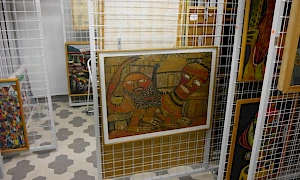
The Nigerian artist Twins Seven Seven in the Iwalewahaus collection
African Art History and the Formation of a Modern Aesthetic -
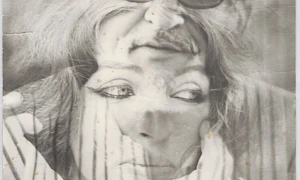
A Place of Belonging – The 'Phantasy Africa' within the Archive of the European Art Patrons Ulli and Georgina Beier
African Art History and the Formation of a Modern Aesthetic -
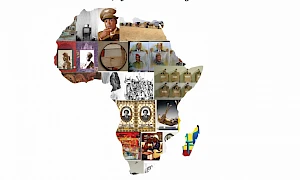
Africa's 1980s: The Intersection of Art, Politics, Economics, and the Social
African Art History and the Formation of a Modern Aesthetic -
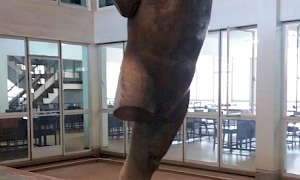
Changes and Developments in Uganda's Modern Art
African Art History and the Formation of a Modern Aesthetic -
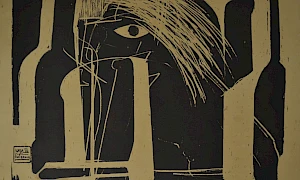
(Dis-)plays of Modern Art
African Art History and the Formation of a Modern Aesthetic